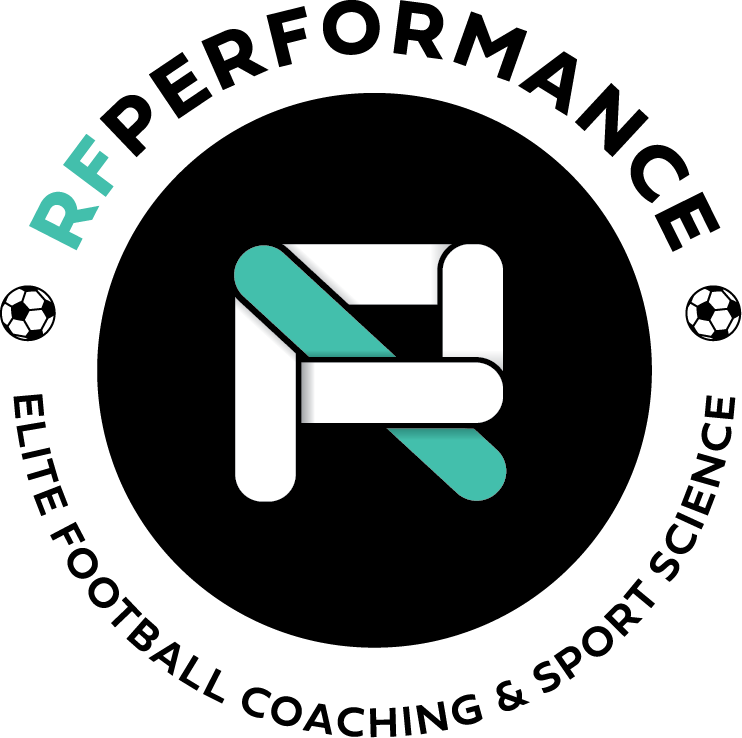Football Recovery
How you recover will determine how you train or play.
Football is a physically demanding sport with players often covering 10km+ per game with high speed running (16km/h+) contributing up to 10% of this distance. Social, social competitive, youth, senior and elite alike. Individual fitness levels, playing position and playing style will all contribute to how much distance a player covers but research has shown that peak running intensities in U15s football can match those of elite level players (1).
Regardless of the level you play the physical actions of sprinting, changing direction, jumping, landing, and tackling all take a massive effort from your body and will start to fatigue you towards the end of and after your training and matches. Below are our suggestions for optimal recovery, check them out! At the very bottom we’ve got an infographic to sum everything up nicely!
Rehydrate
In hot and humid conditions players can lose up to 2% of their body weight in fluids alone which can contribute to fatigue (2). Hydration levels affect so many different processes in the body which are vital during intense exercise to your muscles firing and body moving.
Make sure you start the match well hydrated - sipping on water and sports drinks such as powerade or gatorade in the time leading up to a match will help to keep those hdyration levels up.
Post match (and intense trainings) replace every 1kg of body weight lost with 1.5L of fluids. Weigh yourself prior to your match and then immediately after to work out how much you need to have in the hours post match to rehydrate properly. Depending on your needs this could come from a combination of water, sports drinks (powerade), juice, or flavoured milk.
Try and consume this within 4hrs post match - avoid alcohol where possible.
Refuel
Food is fuel! Our bodies use carbohydrates, stored as glycogen in our muscles and liver, to produce the energy we need to perform all the high intensity actions we do during a match. Post match these will of course be depleted so one of the most important aspects of recovery is to refuel our bodies with carbohydrates and protein to replenish the energy stores and repair muscle damage. The quantities you should consume will depend on a variety of factors such as your weight and how strenuous the game was for you but below are my most recommended strategies to start with.
15-30mins post match consume 250ml of a flavoured milk or other carbohydrate and protein rich recovery drink.
1 hour post match consume your first recovery meal or snack. This could be a full meal or a snack like a peanut butter sandwhich.
2-3 hours post match consume your second recovery meal or snack. If you only had a snack 1hr post match this is where you can load up on the good stuff rich in carbohydrates and protein such as lean meats with potato and veggies, wrap/roll with lean meats and salad, pasta, rice or eggs.
Relax
Sleep is the holy grail! If you’re not getting enough sleep, regardless of playing a match or not, your body will most certainly be functioning sub par. In terms of recovery, sleep is above the holy grail. It is the holy grail of holy grails. So much happens in our bodies when we sleep - cell repair, muscle regeneration and a whole lot more which is vital for players to be able to perform at their best. Research has shown that there is a 1.7x greater risk of injury in those that get less than 8hrs sleep regularly (3). Thats huge.
Below are some tips on how to maximise your relaxing time and drift off to beautiful slumber a little easier:
Follow a bed time routine like reading or having a shower/bath to prepare your body to relax.
Limit screen time 2hrs prior to going to bed. Blue light exposure from phones, tablets, tv’s have been proven to keep us wired and can inhibit good sleep.
Set up your bedroom for sleep success! Quiet, dark and cooler temperatures will make for an optimal sleeping space!
Avoid caffeine - especially after 1pm.
Aim for 8-10hrs sleep every night.
Active Recovery
Sport science is pretty broad these days and there is a lot of research being done on recovery for athletes. Thats the holy grail right, how can i recover better than everyone else so i can get that extra 1% over someone else. It could mean the difference between a starting spot or being on the bench. Not all recovery modalities have been scientifically proven but if it makes you feel better then why not do it.
Below are some extra recovery modalities that can be used:
Cold Water Immersion: Ice baths are a really common recovery modality used in elite sport and are quite controversial in the world of sport science. Sport scientists are still not completely sure how or even if use cold water immersion helps athletes recover quicker but throughout all research, athletes report feeling better after using them, so why not! The most common protocol to use is within 30mins of match completion full body immersion for between 10-20mins in water that is between 12-15deg.
Active Recovery: Active recovery consists of low intensity swimming, walking, runnning or cycling performed for a minimum of 15mins 24-48hrs after high intensity exericse. However, there has been several studies conducted on active recovery and its benefits….of which there are none. Zero. Zilch. Several studies (4,5) performed on football players between 2 matches 3 days apart showed active recovery had no effect on recovery markers and therefore has no benefit. Scientifically its no good, but if going for a light walk or swim the next day makes you feel better then do it.
Stretching/Foam Rolling: Elite soccer teams devote a substantial amount of training and match preparation time to stretching. Stretching exercises are performed for several reasons: to improve range of motion, to reduce musculotendinous stiffness, to prevent injury, as well as to promote recovery. However, there is no substantial scientific evidence to support the use of stretching to enhance the post-exercise recovery of soccer players. In a meta-analysis including 12 studies, Herbert et al (6) reported that stretching is not clinically worthwhile in reducing muscle soreness in the days following exercise. Recovery of physical performance is not improved after stretching.
Massage: In terms of recovery of performance, most of the studies failed to find a significant beneficial effect of massage on subsequent exercise after exercise (7). Massage decreased the subjective symptoms of delayed onset muscle soreness and increased perceptions of recovery, in other words, athletes reported that they felt better after a massage. In conclusion, benefits of massage are still lacking regarding recovery of performance. Conversely, the majority of the evidence points towards massage being effective in alleviating muscle soreness and improving perceptions of recovery.
Compression Garments: The principle of compression garments is to increase the pressure on the ankle and to decrease it on the mid-thigh in order to improve the blood return. In a meta-analysis, data were extracted from 12 studies, where variables were measured at baseline and at 24, 48 or 72 hours post-exercise (8). Results indicated that the use of compression garments had a moderate effect on recovery of muscle strength, muscle power, creatine kinase and in reducing the severity of delayed onset muscle soreness. In conclusion, the use of compression garments may provide an easy-to-use recovery strategy in a team. They could be useful during air travel, especially during long flights, to reduce the risk of deep vein thrombosis.
References:
L. H. P. Vieira, C. Carling, F. A. Barbieri, R. Aquino and P. R. P. Santiago, “Match Running Performance in Young Soccer Players: A Systematic Review,” Sports Med, vol. 49, no. 2, pp. 289-318, 2019.
M. Nédélec, A. McCall, C. Carling, F. Legall, S. Berthoin and G. Dupont, “Recovery in Soccer Part I – Post-Match Fatigue and Time Course of Recovery,” Sports Med, vol. 42, no. 12, pp. 997-1015, 2012.
N. P. Walsh, S. L. Halson, C. Sargent, G. D. Roach, M. Nédélec, L. Gupta, J. Leeder, H. H. Fullagar, A. J. Coutts, B. J. Edwards and S. A. Pullinger, “Sleep and the athlete: narrative review and 2021 expert consensus recommendations,” British journal of sports medicine, vol. 55, no. 7, pp. 356-368, 2021.
Andersson H, Raastad T, Nilsson J, Paulsen G, Garthe I, Kadi F. Neuromuscular fatigue and recovery in elite female soccer: effects of active recovery. Med Sci Sports Exerc 2008; 40:372-380.
Andersson H, Karlsen A, Blomhoff R, Raastad T, Kadi F. Active recovery training does not affect the antioxidant response to soccer games in elite female players. Br J Nutr 2010; 104:1492-1499.
Herbert RD, de Noronha M, Kamper SJ. Stretching to prevent or reduce muscle soreness after exercise. Cochrane Database Syst Rev 2011:CD004577.
Robertson A, Watt JM, Galloway SD. Effects of leg massage on recovery from high intensity cycling exercise. Br J Sports Med 2004; 38:173-176.
Hill J, Howatson G, van Someren K, Leeder J, Pedlar C. Compression garments and recovery from exercise-induced muscle damage: a meta-analysis. Br J Sports Med 2013 (Published online ahead of print).


